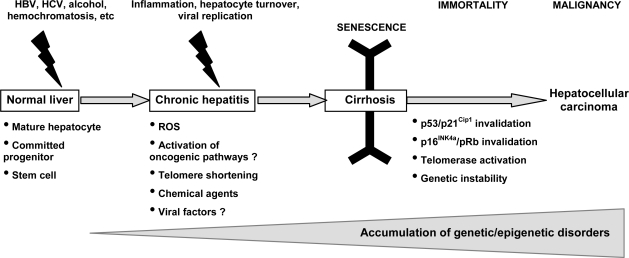Figure 3.
The proposed model of hepatocarcinogenesis. One or several types of liver cells (mature, hepatocytes, progenitor/stem cells) could support the multi-step process of accumulating genetic/epigenetic disorders leading to senescence, and subsequently bypassing senescence to reach cancer. Cirrhosis is a senescent state that could be induced by different factors such as ROS, oncogene activation and telomere shortening for instance. The senescent state is kept active by the p53/p21 and p16/pRb checkpoints. When these gatekeepers become inactive, the cell can bypass senescence, and re-enter cell cycle progression and DNA hyper-replication in a context of immortality, due to telomerase reactivation, and genetic insability. Thus, the cell is prone to acquire the last genetic/epigenetic hits necessary to get tumorigenicity and cancer stem cell capabilities.

